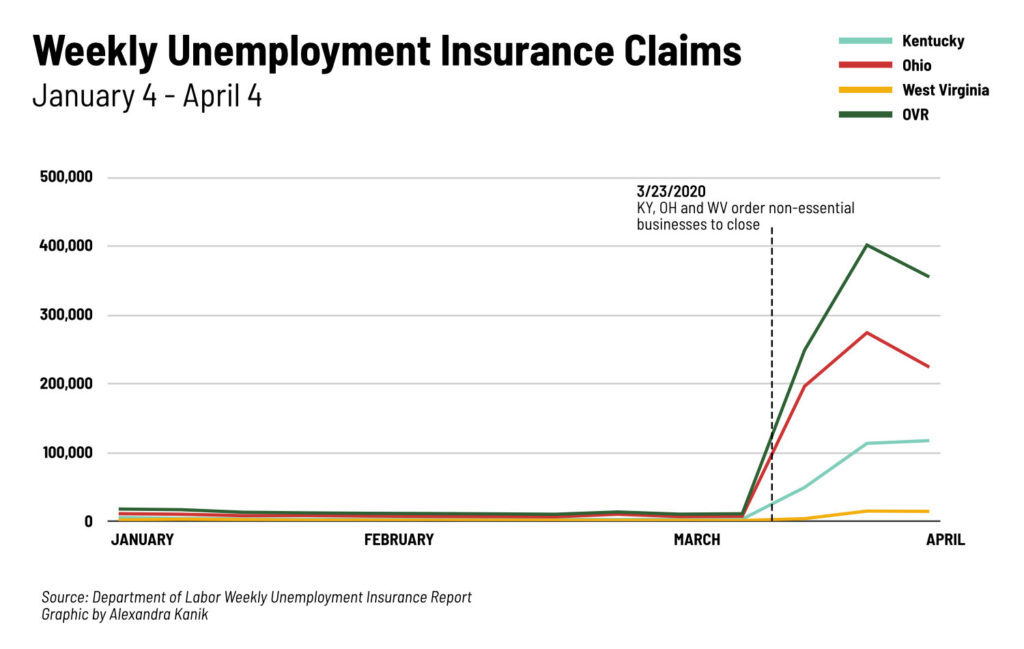News
Unemployment Claims In Ohio Valley Surge Again, Up Another 355,000
By: Jeff Young | Ohio Valley ReSource
Posted on:
Claims for unemployment insurance once again surged around the Ohio Valley as nearly 355,500 people in Kentucky, Ohio, and West Virginia sought help last week amid the economic calamity caused by the coronavirus pandemic. That’s in addition to the roughly 400,000 unemployment claims from the three states the previous week. The graph below shows the unprecedented amount of weekly insurance claims for each state and the region (note that the numbers here are not cumulative).

The new numbers come from data released Thursday morning by the U.S. Department of Labor showing more than 6.6 million around the country.
That’s on top of nearly 10 million unemployment claims in the previous two weeks, a figure that dwarfs the unemployment claims filed during the nation’s deep economic recessions of 2008 and 1982.
Labor Dept. figures for the week ending April 4 show: Kentucky with 117,135 claims; Ohio with 224,182; and West Virginia with 14,145.
Officials from the three states say they expect the jobless figures to continue to climb as they address a backlog in processing claims. Unemployment offices around the region have been overwhelmed by the volume of incoming applications.
Kentucky officials announced this week that they are expanding the unemployment call center, adding hundreds of workers to process the flood of claims in recent weeks.
Bracing for Impact
In addition to the immediate effects on working people, city and state governments around the region are also bracing for fiscal impacts as lost jobs and shuttered businesses create a void in the tax base.
The centrist think tank the Brookings Institution warns that cities that generate the majority of their revenue from sales or income taxes will be hit hard and immediately due to consumer declines and job losses.
“Those that are not getting paid aren’t contributing to the tax base of the city and consumption as we know has really dried up,” Michael Pagano said. He co-authored the report and is the director of the Government Finance Research Center at the University of Illinois in Chicago.
The Ohio Valley region has many cities that rely on that sort of tax base.
Pagano said that among the 20 cities in the nation most likely to feel immediate fiscal pain, eight are in Kentucky and Ohio, including Cincinnati and Columbus in Ohio and Bowling Green, Lexington and Louisville in Kentucky.
Louisville Mayor Greg Fischer warned the city will be forced to make massive budget cuts if it does not receive federal relief. Partner station WFPL reports that an economist advising Louisville’s metro council has projected that the city’s two major sources of revenue could lose nearly $18 million, or about 3%.
Sean O’Leary, a policy analyst at the left-leaning West Virginia Center on Budget and Policy, pointed out in an opinion piece that even before the pandemic forced businesses to close West Virginia was already looking at a tight budget.
“Before the effects of the crisis were really felt, state revenue for the current fiscal year was already $18.7 million below estimates, with little growth anticipated in the coming fiscal year,” he wrote.

